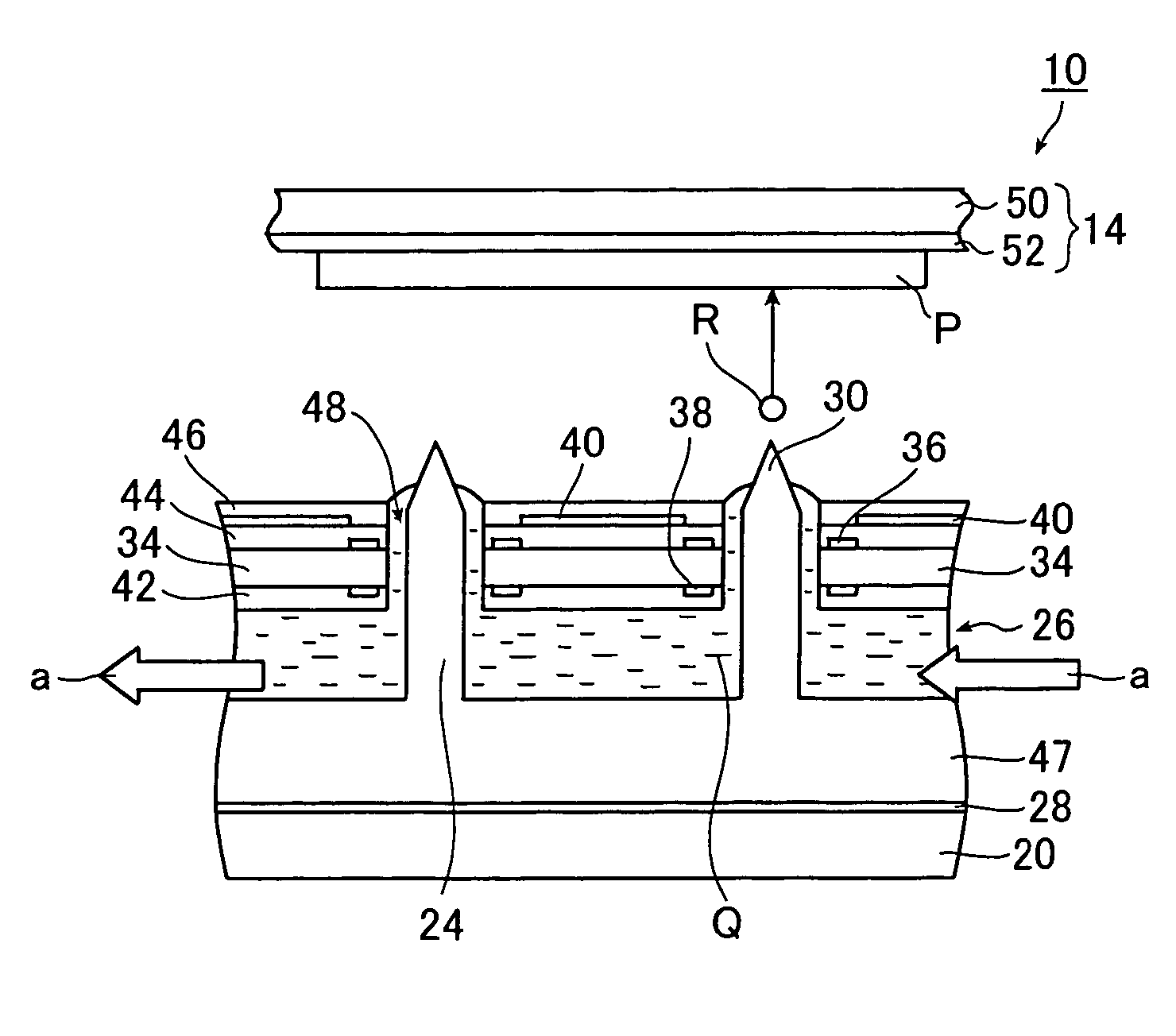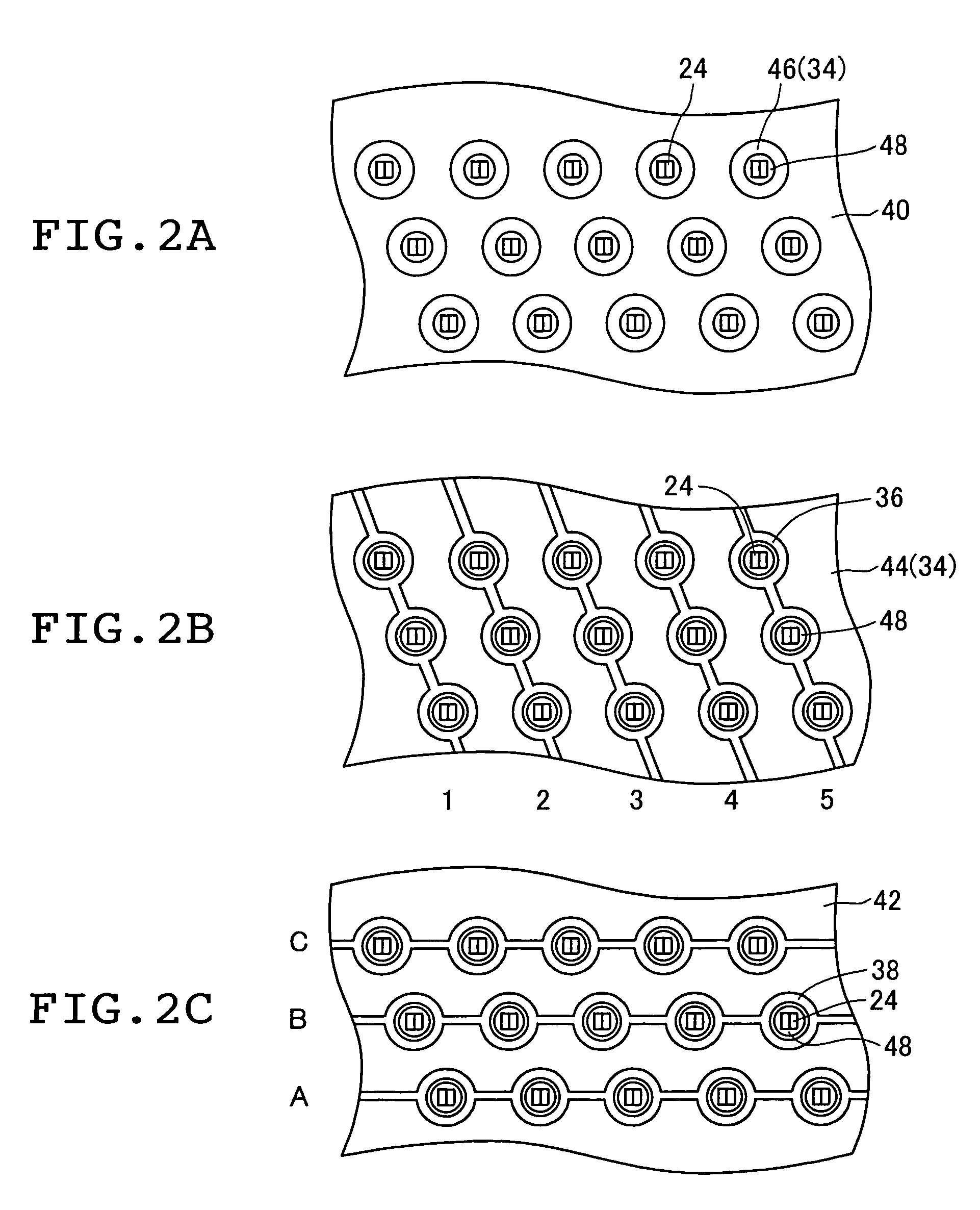Ink composition and inkjet recording method
a technology of composition and inkjet, applied in the field of inkjet composition, can solve the problems of lowering controllability, ejection delay, reducing image quality, etc., and achieve the effects of avoiding variation in dot diameter, excellent frequency responsivity, and alleviating ejection delay
- Summary
- Abstract
- Description
- Claims
- Application Information
AI Technical Summary
Benefits of technology
Problems solved by technology
Method used
Image
Examples
example 1
The following materials were prepared: Cyan pigment (colorant) [Phthalocyanine pigment, C. I. Pigment Blue (15:3) (LIONOL BLUE FG-7350, manufactured by Toyo Ink Mfg. Co., Ltd.); Coating agent [AP-1]; Dispersant [BZ-2]; Charging regulator [CT-1]; and Dispersion medium: Isopar G (manufactured by Exson Mobil Corporation).
The coating agent [AP-1], the dispersant [BZ-2], and the charging regulator [CT-1] have the following structural formulas:
The coating agent [AP-1], the dispersant [BZ-2], and the charging regulator [CT-1] were synthesized as follows.
Coating Agent [AP-1]
Styrene, 4-methyl styrene, butyl acrylate, dodecyl methacrylate, and 2-(N,N-dimethylamino)ethyl methacrylate were radically polymerized using a known polymerization initiator and then reacted with methyl tosylate to obtain AP-1. The resulting AP-1 had a weight average molecular weight of 15,000, a polydispersity index (weight average molecular weight / number average molecular weight) of 2.7, a glass transiti...
example 2
An ink composition (Example 2) was prepared by the same way as that of Example 1, except that 0.65 g of the charging regulator [CT-1] was added.
The resulting ink composition was subjected to the measurement of the volume average particle size, the electric conductivity C of colorant particles therein, and also the electric conductivity Cx of the colorant particles after the addition of 0.01% by mass of the charging regulator [CT-1] by the same way as that of Example 1.
Consequently, the volume average particle size was 0.9 μm, the electric conductivity C of the colorant particles was 75 nS / m, the electric conductivity Cx of the colorant particles after the addition of the charging regulator was 77 nS / m, and (Cx−C) / C was 0.03. This result confirmed that the electric conductivity of the colorant particles in the ink composition was saturated.
example 3
An ink composition (Example 3) was prepared by the same way as that of Example 1 described above, except that the dispersion with the Type KDL dyno-mill manufactured by Shinmaru Enterprises Corp. was performed while the inner temperature was kept at 25° C. for 5 hours and then at 45° C. for 1 hour.
The resulting ink composition was subjected to the measurement of the volume average particle size, the electric conductivity C of colorant particles therein, and also the electric conductivity Cx of the colorant particles after the addition of 0.01% by mass of the charging regulator [CT-1] by the same way as that of Example 1.
Consequently, the volume average particle size was 0.5 μm, the electric conductivity C of the colorant particles was 130 nS / m, the electric conductivity Cx of the colorant particles after the addition of the charging regulator was 135 nS / m, and (Cx−C) / C was 0.04. This result confirmed that the electric conductivity of the colorant particles in the ink compositio...
PUM
| Property | Measurement | Unit |
|---|---|---|
| polydispersity index | aaaaa | aaaaa |
| electric conductivity | aaaaa | aaaaa |
| carboxylic acid | aaaaa | aaaaa |
Abstract
Description
Claims
Application Information
 Login to View More
Login to View More - R&D
- Intellectual Property
- Life Sciences
- Materials
- Tech Scout
- Unparalleled Data Quality
- Higher Quality Content
- 60% Fewer Hallucinations
Browse by: Latest US Patents, China's latest patents, Technical Efficacy Thesaurus, Application Domain, Technology Topic, Popular Technical Reports.
© 2025 PatSnap. All rights reserved.Legal|Privacy policy|Modern Slavery Act Transparency Statement|Sitemap|About US| Contact US: help@patsnap.com



